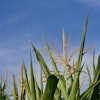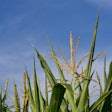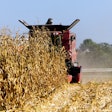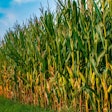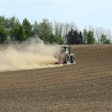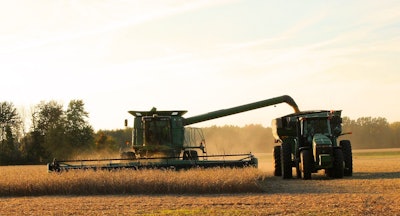
The latest U.S. Department of Agriculture (USDA) crop production report shows a modest increase in corn and soybean production forecasts, with both major grain crops expected to see higher yields compared to last year. However, overall production remains challenged by weather conditions and reduced acreage.
Corn production sees marginal increase
Corn production is forecasted at 15.2 billion bushels, reflecting a less than 1% increase from September’s estimate but a 1% decline from 2023. The USDA estimates that average yields will reach 183.8 bushels per acre, a slight uptick of 0.2 bushels from the previous forecast and 6.5 bushels higher than last year. The harvested area remains unchanged from the September forecast at 82.7 million acres, representing a 4% drop from 2023.
The small increase in yield may provide some relief to corn growers dealing with tighter margins, but the lower harvested acreage signals that overall supply could remain tight in the face of strong global demand.
Soybean production hits record high, despite small revision
Soybean production is projected to reach a record 4.58 billion bushels, slightly down from September’s forecast but up 10% compared to 2023. Average yields are expected to be 53.1 bushels per acre, down 0.1 bushels from the last estimate but up 2.5 bushels from 2023. The harvested area is set at 86.3 million acres, up 5% from last year.
The strong production numbers reflect favorable growing conditions for much of the Midwest, though recent dry spells have caused some localized concerns. With soybeans being a key component in both animal feed and global oilseed markets, the record high production could help stabilize prices.
Weather events and future adjustments
The USDA noted that while the data was collected after Hurricane Helene swept through parts of the Southeast, the full impact on grain and other field crops may not be fully realized until subsequent reports. Survey work for this month’s estimates occurred from late September to early October, following the storm's landfall in Florida and its path through Georgia, Alabama, and the Carolinas.
Any potential adjustments in harvested acreage and yield forecasts will be made in future reports as more data on crop damage and losses becomes available. This uncertainty may affect market conditions, particularly if significant damage to remaining crops is confirmed.
Outlook for grains
The grain market will likely see some volatility as the harvest progresses and the true impact of late-season weather events is assessed. Analysts will be closely watching yield reports from key states like Iowa, Illinois, and Indiana to gauge final production levels.
With global demand for U.S. grains remaining robust, the latest USDA report suggests that while there is some cause for optimism with record soybean yields, concerns over reduced corn acreage and the potential for weather-related disruptions could keep markets on edge.

